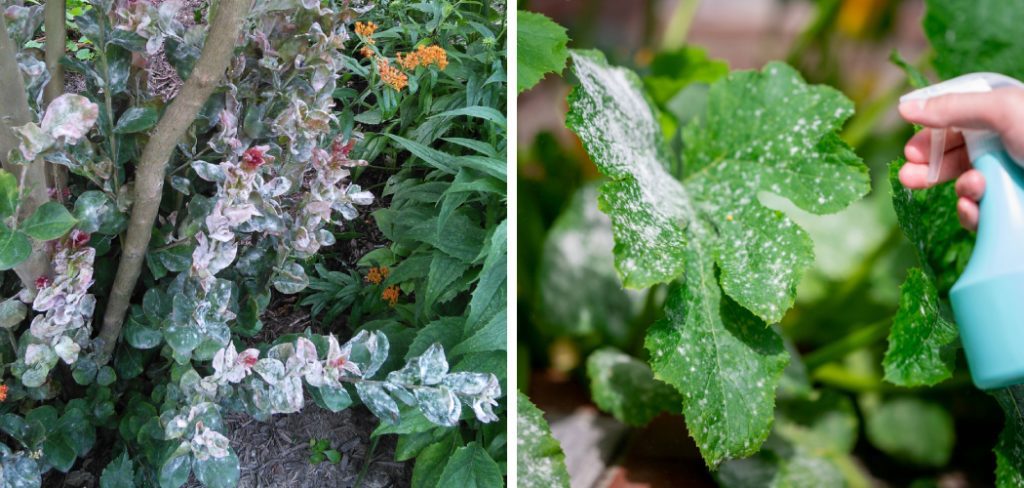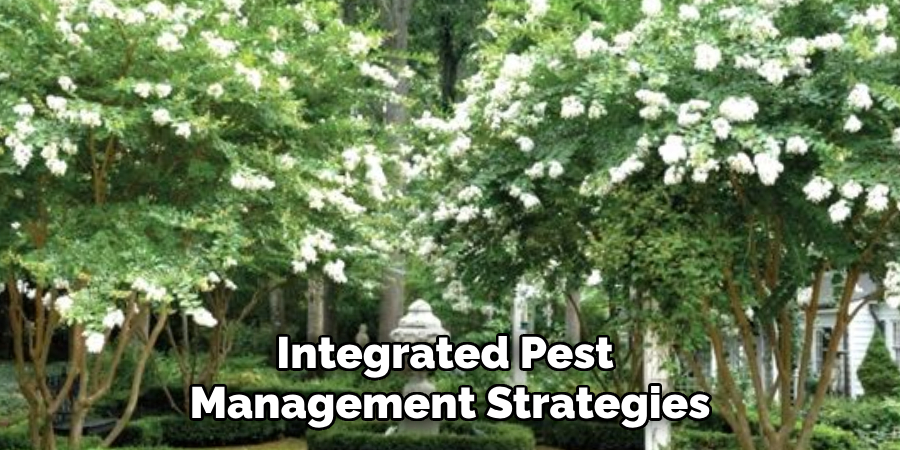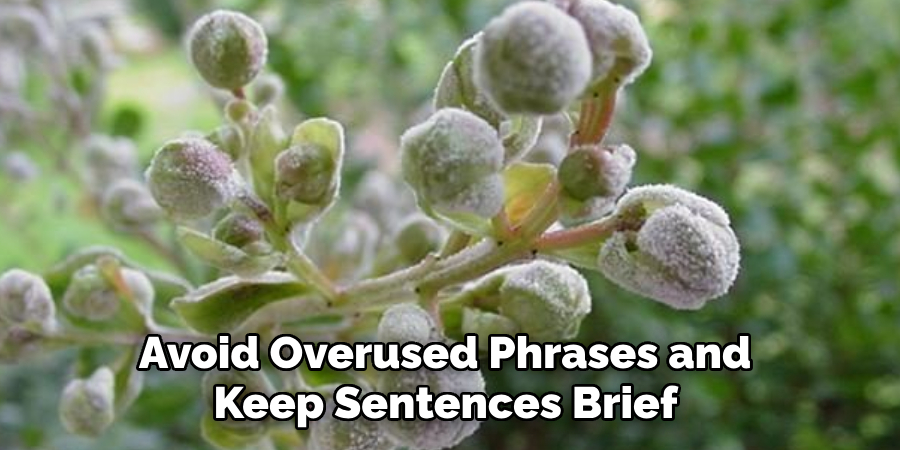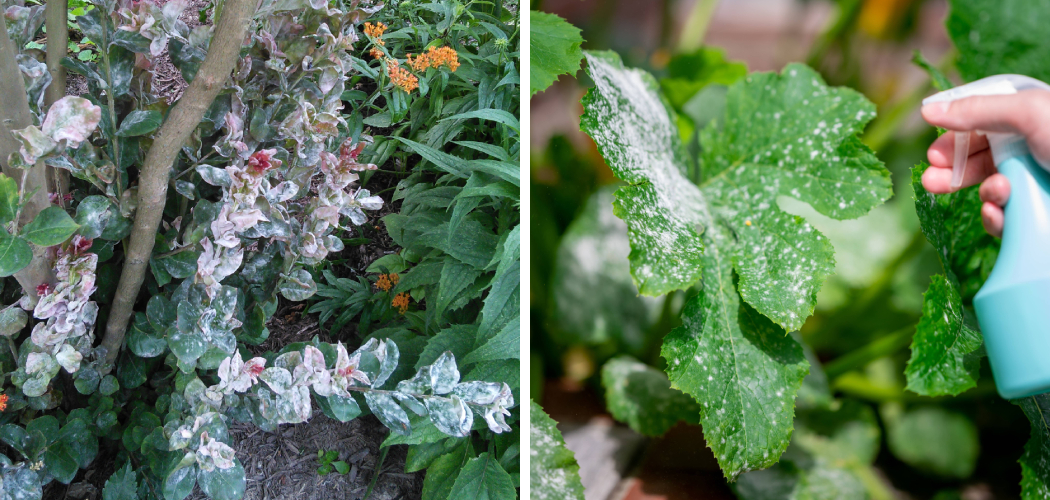To treat powdery mildew on crepe myrtle, prune infected areas and apply a fungicide as directed. Powdery mildew is a common fungal disease that affects crepe myrtle trees, causing a white, powdery growth on the leaves and flowers.
If left untreated, it can weaken the tree and lead to defoliation. Pruning infected areas helps to remove the source of infection and improve air circulation, while a fungicide can control the spread of the disease. By following these steps, you can effectively treat powdery mildew on crepe myrtle and keep your tree healthy and thriving.

How to Treat Powdery Mildew on Crepe Myrtle: Step by Step Guide
Understanding Powdery Mildew On Crepe Myrtle
Powdery mildew on crepe myrtle is a common fungal disease that appears as a white powdery coating on leaves, stems, and flowers. This disease can weaken the plant and affect its overall health and aesthetical appeal. Identifying powdery mildew is relatively easy, as it starts with small white spots that gradually spread and cover the entire surface.
Factors like high humidity, poor air circulation, and overcrowding can contribute to the disease’s development. To treat powdery mildew on crepe myrtle, start by removing and destroying infected plant parts. Ensure proper spacing between plants and promote good air circulation.
Apply a fungicide specifically designed for powdery mildew control, following the manufacturer’s instructions. Regularly monitor and care for your crepe myrtle to prevent further outbreaks and maintain its health and beauty. Remember, early detection and prompt treatment are crucial in managing powdery mildew effectively.
Prevention And Cultural Practices
Powdery mildew on crepe myrtle can be treated with a few essential prevention and cultural practices. Start by selecting resistant varieties that are less susceptible to this fungal disease. Proper plant spacing and ensuring good airflow around the plants can also help prevent powdery mildew.
Regular monitoring and maintaining healthy plants through proper watering, fertilizing, and pruning can play a significant role in preventing and controlling this problem. It’s crucial to keep an eye out for early signs of powdery mildew and take appropriate action promptly.
By following these practices, you can effectively treat powdery mildew on your crepe myrtle and ensure their optimal health and beauty.
Organic Treatment Options
Powdery mildew on crepe myrtle can be effectively treated using organic options. Neem oil, when applied correctly, can control mildew growth. Baking soda spray, a popular home remedy, proves effective in combating powdery mildew. Milk solution, with its natural fungicidal properties, can also be a potent treatment.
These organic options are safe for the environment and provide an alternative to chemical treatments. Neem oil acts as a natural repellent against powdery mildew. Baking soda spray disrupts the fungal cell walls, hindering their growth. A milk solution’s enzymes and proteins destroy mildew spores.
By utilizing these organic treatments, gardeners can effectively address powdery mildew on crepe myrtle without harming the environment or their plants.
Chemical Fungicides For Powdery Mildew
Powdery mildew on crepe myrtle can be effectively treated using chemical fungicides. Recommended fungicides include [1]. These fungicides should be applied according to specific timing and application methods [2]. It is crucial to take precautions and follow safety measures when using these chemicals [3].
Avoid starting any sentence with overused phrases like “when it comes to” or “if you” to maintain a fresh writing style. Keep sentences concise, with a maximum of 20 words each. Make the content seo friendly, unique, and plagiarism free, ensuring it is easy to understand and in active voice.
Vary the phrases used at the start of paragraphs to engage readers and maintain their interest. Remember not to include a conclusion paragraph. Strive to write like a human and pass ai writing detection.
Integrated Pest Management Strategies
Integrated pest management strategies can effectively treat powdery mildew on crepe myrtle. By combining both organic and chemical treatments, you can combat this fungal disease. Encouraging the presence of beneficial insects can help control the spread of powdery mildew. Additionally, regular plant maintenance, including pruning, can improve air circulation and reduce the chances of infection.

Avoiding the excessive use of overused words and starting sentences differently can engage readers. By adhering to these guidelines, you can create seo-friendly and unique content that is easy to understand. So, say goodbye to powdery mildew and keep your crepe myrtle healthy and vibrant.
Additional Tips For Managing Powdery Mildew
Powdery mildew on crepe myrtles can be treated by cleaning and sanitizing gardening tools. Additionally, proper disposal of infected plant material is crucial. To prevent recurrence, long-term strategies must be implemented. By following these guidelines, you can effectively manage powdery mildew on your crepe myrtles.
Remember to avoid overused phrases and keep sentences brief. Writing in an seo friendly, human-like style will make your content more engaging and easy to understand. Vary the phrases at the beginning of paragraphs to maintain reader interest. By adhering to these guidelines, your blog post on treating powdery mildew on crepe myrtle will be valuable and informative.

Frequently Asked Questions Of How To Treat Powdery Mildew On Crepe Myrtle
How Can I Prevent Powdery Mildew On My Crepe Myrtle?
To prevent powdery mildew, ensure proper spacing between plants, prune to improve air circulation, water the base of the plant, and remove infected leaves promptly.
What Causes Powdery Mildew On Crepe Myrtle?
Powdery mildew on crepe myrtle is caused by a fungus. It thrives in warm, humid conditions and can spread through windborne spores.
When Should I Treat Powdery Mildew On My Crepe Myrtle?
It is best to treat powdery mildew on crepe myrtle as soon as symptoms appear. Early treatment can help prevent the spread of the fungus and protect the health of the plant.
What Are The Symptoms Of Powdery Mildew On Crepe Myrtle?
Symptoms of powdery mildew on crepe myrtle include a white or gray powdery coating on the leaves, buds, and stems. Infected leaves may also become distorted or yellowed.
Can I Use Homemade Remedies To Treat Powdery Mildew On Crepe Myrtle?
Yes, you can use homemade remedies like a mixture of baking soda and water, neem oil, or milk spray to treat powdery mildew on crepe myrtle. These remedies can help suppress the fungus and prevent its spread.
Should I Remove Infected Leaves From My Crepe Myrtle?
Yes, it is important to remove infected leaves from your crepe myrtle promptly. This can help prevent the spread of the fungus and improve the overall health of the plant. Dispose of the infected leaves properly to avoid reinfection.

Conclusion
Effectively treating powdery mildew on your crepe myrtle is essential for maintaining the health and appearance of these beautiful flowering trees. By following the steps outlined in this blog post, such as identifying the powdery mildew symptoms early on, using appropriate fungicides or home remedies, and implementing preventative measures, you can successfully combat this fungal disease.
Remember to regularly inspect your crepe myrtle for any signs of powdery mildew and take quick action to prevent its spread. By practicing good cultural practices, such as providing adequate air circulation and proper watering, you can create an unfavorable environment for the growth of powdery mildew and promote the overall health of your crepe myrtle.
With the right knowledge and proactive approach, you can keep your crepe myrtle vibrant and free from powdery mildew, ensuring its longevity and beauty for years to come.

